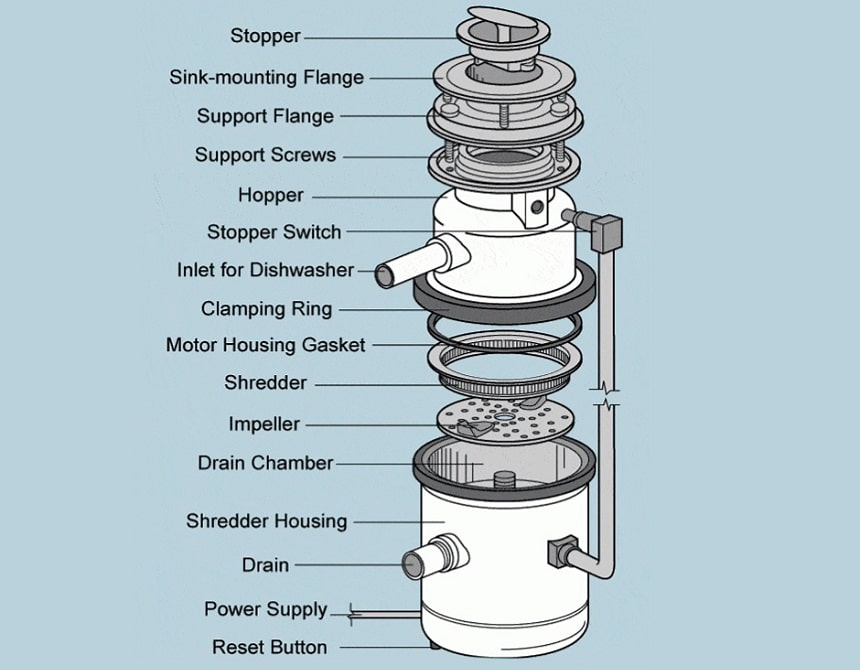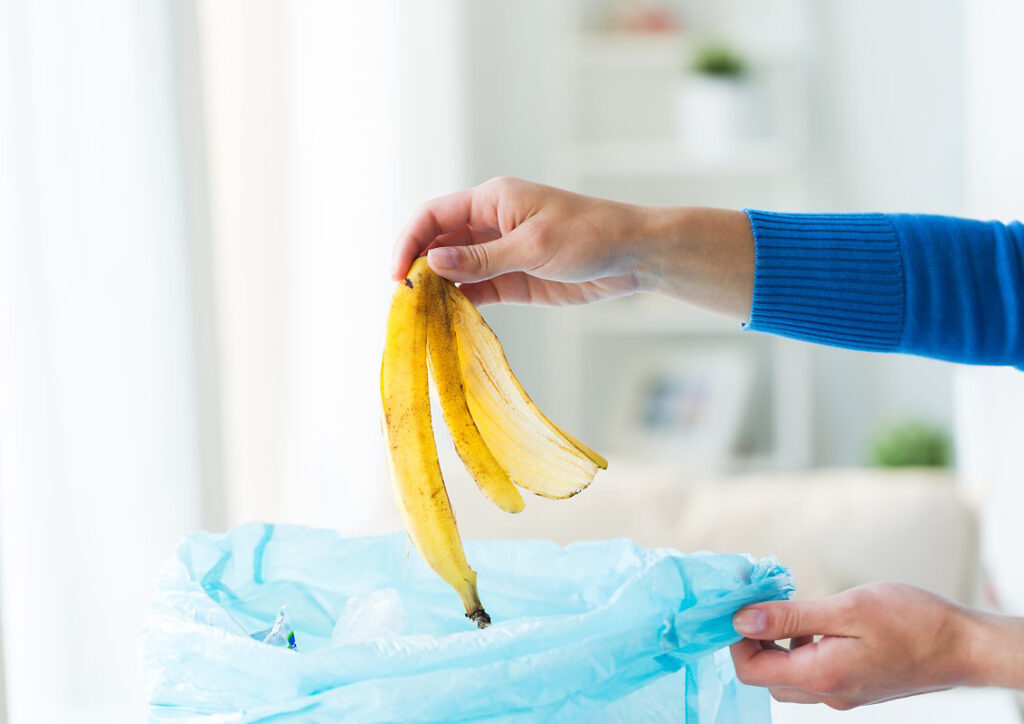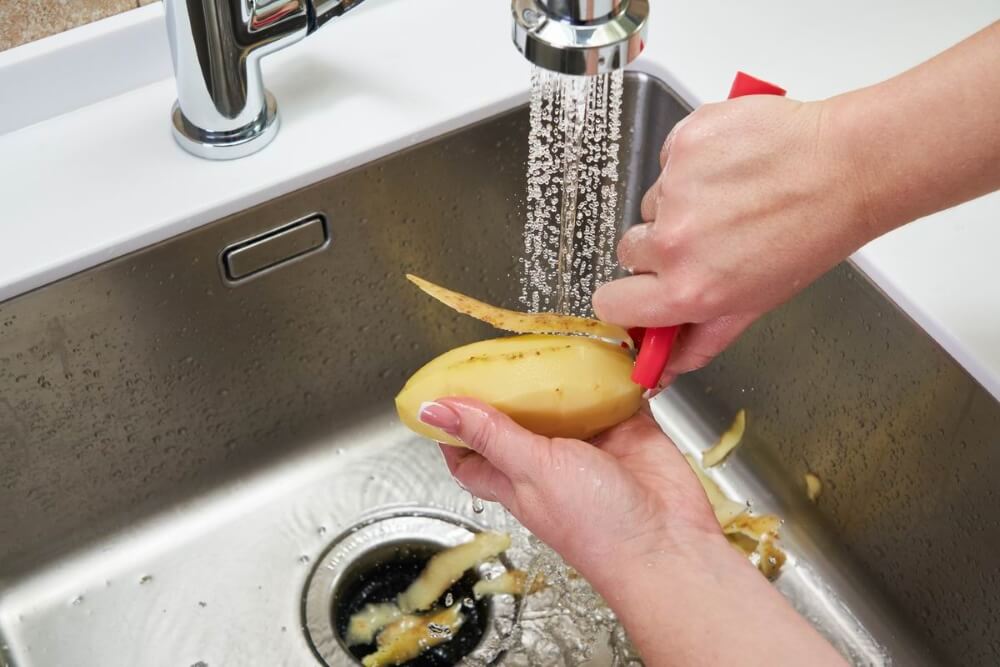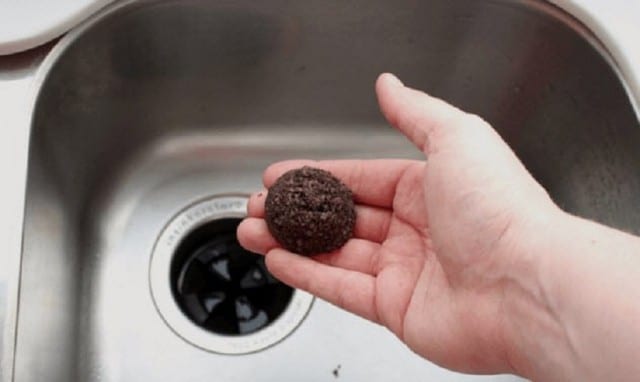The disposal of waste in a society such as ours is among the most intractable problems. Waste disposal is the leading cause of environmental pollution. The storage of waste can be harmful to the soils and cause their destruction; by incineration, there is also the problem of emissions.
There are different ways of waste disposal. It can be disposed of in landfills, burned in incinerators, treated for composting, recycled for a new or different use, or shredded and sent in the sewerage, the best method of all. So, how does a garbage disposal work, and what are its advantages?
You may have seen these types of machines in horror movies all full of blood, but don’t worry, we assure you there is nothing to fear!
The sink garbage disposal method works with the use of the garbage disposal machine. They’re installed underneath the kitchen sink, where garbage is processed into a yogurt-like liquid with the use of water and sent straight in the sewer.
In this article, we’ll see how it works, how to use and how to maintain the machine.
A typical garbage disposal unit is a metal or plastic canister, which usually has a motor at the bottom as well as a large opening called a grinding chamber or hopper which catches garbage from the sink. The opening has a flywheel at the base, a metal plate that spins.

The garbage disposal system is not only the result of technology but also common sense because food waste not only produces pollution but also impoverishes a planet where the redistribution of resources is already unfair. The UN reveals that 1.3 billion tons of waste are discarded every year Trusted Source More than 1 billion tons of food lost or wasted every year, UN-backed report finds | | UN News About a third of all the food produced for human consumption each year – or roughly 1.3 billion tons – is lost or wasted, according to a new study commissioned by the United Nations Food and Agriculture Organization (FAO). news.un.org and that it is in the kitchens of the house that the largest portion of food is concentrated that ends up in the garbage. The first household food waste disposer (also called garbage compactor) was from the American multinational InSinkErator, the reference company in the sector. One of their best models is the InSinkErator 1.0 HP Garbage Disposal,
The waste system sits comfortably under the sink and integrates easily and discreetly. With the disposer installed, any type of organic surplus can be disposed of directly in the sink.
With no chemical process and usually no blade, this system uses only high-speed rotary movements of a ring that grinds and shreds these foods into very fine parts until they reach a semi-liquid stage that allows their removal in clear water.
To work, it is only necessary to press a button, and the mechanics will do the rest safely and quietly. The crushed organic waste comes out in the form of Yogurt and passes into the wastewater stream.
Contrary to what it may seem, hot water is the great enemy of the shredder. It should be crushed with plenty of cold water, with the idea of helping in the correct cooling of the appliance’s motor. Many people are used to scrubbing with hot water to dissolve fat. However, these dissolved fats usually solidify when passing a meter or meter and a half of pipe. There they reduce the space of the PVC pipe and cause blockages.
Contrary to what it may seem, hot water is the great enemy of the shredder. It should be crushed with plenty of cold water, with the idea of helping in the correct cooling of the appliance’s motor. Many people are used to scrubbing with hot water to dissolve fat. However, these dissolved fats usually solidify when passing through the pipe. There they reduce the space of the PVC pipe and cause blockages.
In this simple way, the wet bag of organic materials will become a distant memory, as well as the bad odors it causes.
In addition to being practical and functional, this type of household appliance reduces the amount of household waste in landfills by approximately 20%. According to most reviews, the GX50C Prep Series, designed by Moen is by far one of the most reliable and time-proven ones. It allows you to crush garbage almost noiselessly, thanks to its Sound Reduction technology.
The following are items that can go down the garbage disposal unit:
The following things can end up clogging the system or making the system ineffective:
With the garbage disposal turned off, clean the inside of the rubber in the center of the sink, in the section that leads to the garbage disposal. It tends to get very dirty and would give off a terrible smell if not cleaned regularly.
To clean the disposer, just add half a lemon, and that’s it. You can also make use of ice from time to time. Even if the ice doesn’t sharpen the blades (as some believe), it will help remove any debris that has built up and is not allowing the garbage disposal to perform at its best.
For an even better result, use special cubes made with lemon juice or vinegar, or alternatively with biodegradable detergents.
The kitchen disposals are one of those gadgets designed to make our lives easier. In addition to being a clean and ecological technology, they manage to keep odors at bay. They are essential in kitchens open to the living room.
With great sales success in the Anglo-Saxon and Scandinavian countries, the new disposers are increasingly in demand in the market. This partly due to our new uses and customs such as opening the kitchen to the living room, which can also mean opening the smells to the whole house.
It’s not only necessary to ask: how does a garbage disposal work during your pre-acquisition stage. You also have to know what food and kitchen scraps they can and cannot process. We hope you can find utility with the latest models on the market as some can even process bones and most don’t have blades. The new models are ecological, functional and in addition to controlling odors, they manage to keep organic waste organized and recycled.





